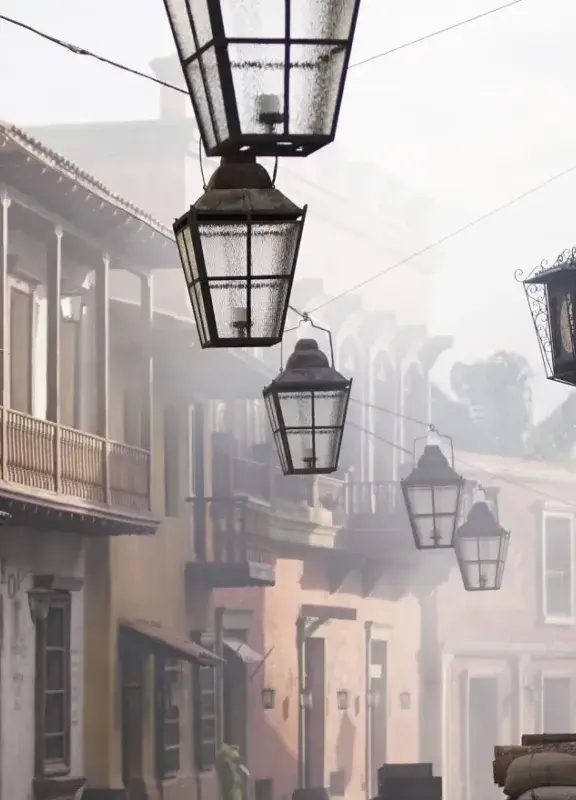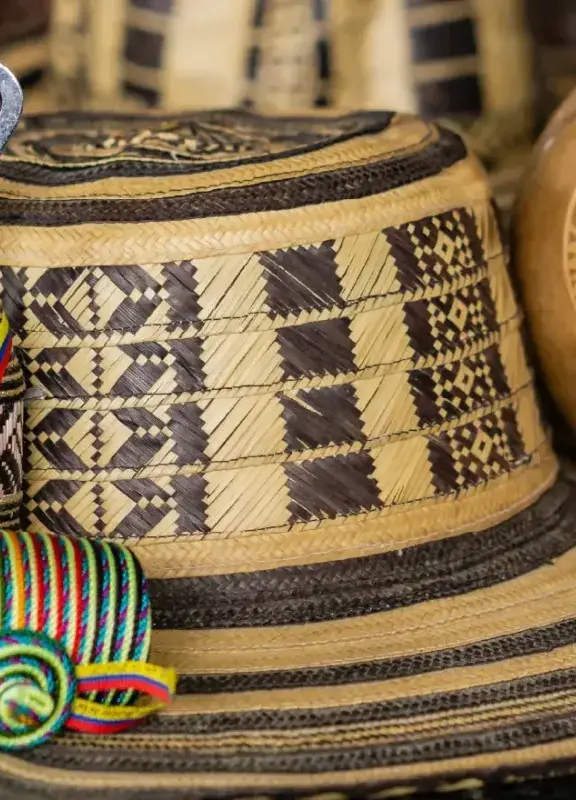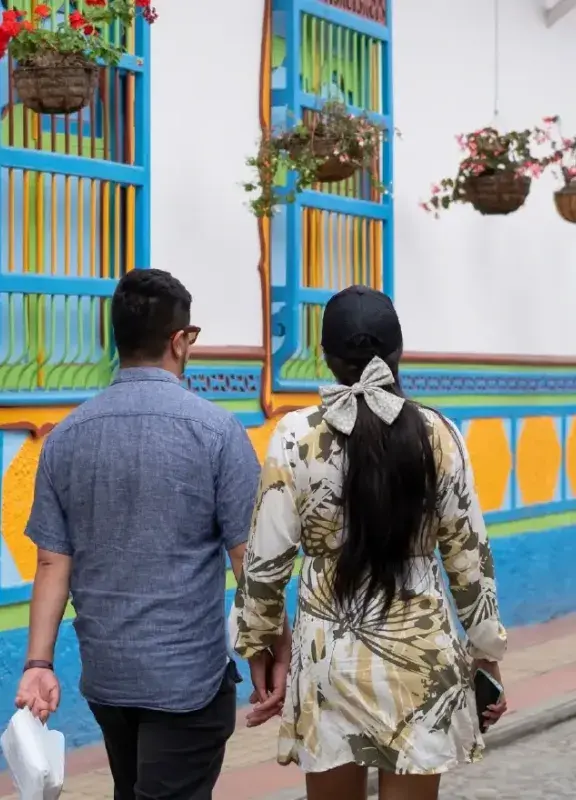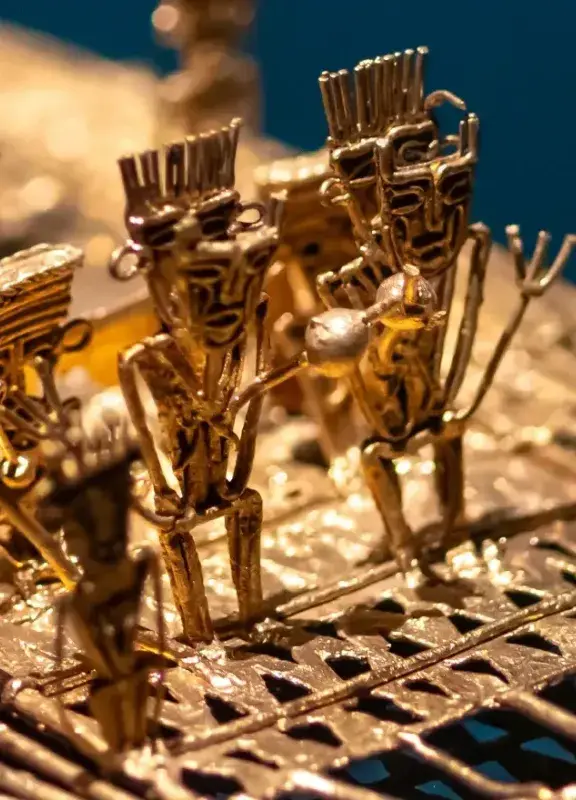Discover Colombian goldsmithing and its legacy
Discover the richness of Colombian goldsmithing! Explore its history, techniques, and pieces that reflect a unique craft tradition.
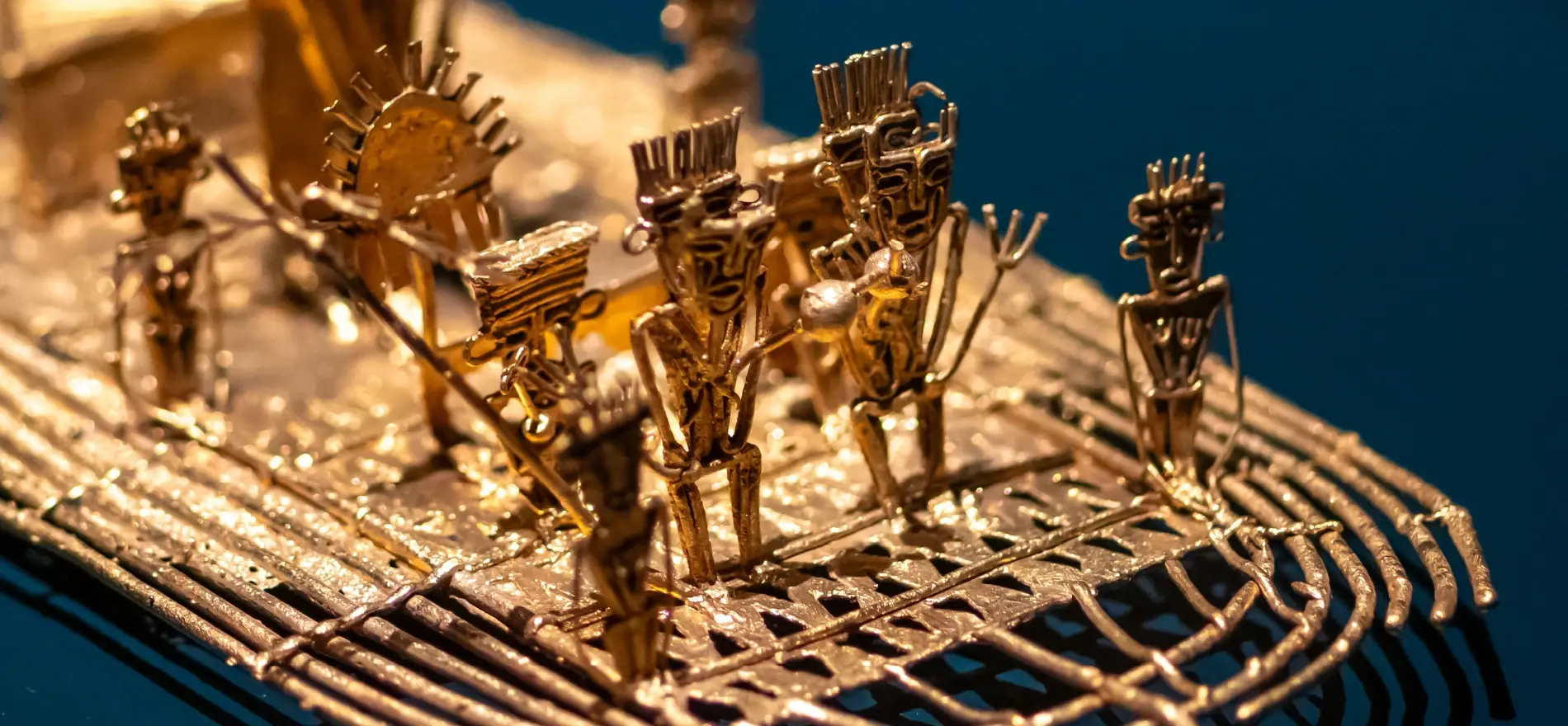
Colombian goldsmithing is one of the most representative manifestations of the country's artisanal tradition. Since pre-Hispanic times, working with precious metals has been laden with symbolic, spiritual, and social significance. Civilizations such as the Muiscas, Quimbayas, Taironas, and Zenúes developed complex techniques to transform gold into objects that today amaze with their beauty and sophistication.
Currently, goldsmithing remains alive in various regions of the country, where artisans and communities keep a diverse artisanal tradition alive, passed down from generation to generation. In places like Mompox or Pasto, ancestral techniques coexist with contemporary proposals that demonstrate the relevance of this cultural legacy.
In this article, we will tell you about the origins of Colombian goldsmithing, different pieces of art, traditional goldsmithing techniques, and spaces where you can appreciate this artistic richness. A journey through the history, art, and identity of an artistic and cultural country.
You might be interested in: Experience the best of Colombian art in Bogotá, Medellín and Cartagena
What are the ancestral origins of Colombian goldsmithing?
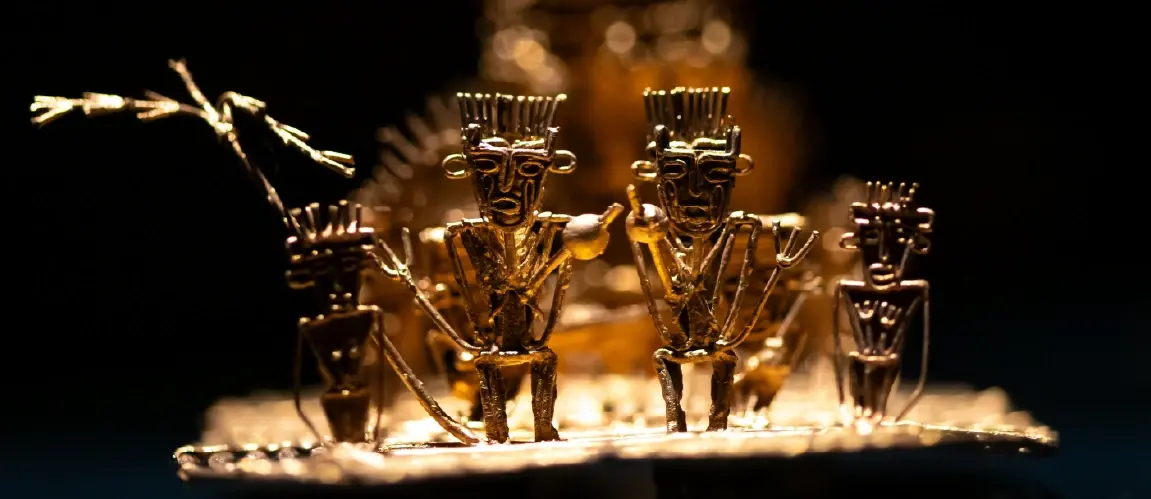
Colombian goldsmithing has its roots in the ancient pre-Hispanic cultures that inhabited the territory. Civilizations like the Muiscas, Quimbayas, Taironas, and Zenúes developed advanced techniques for working with gold, tumbaga, and copper through processes such as lost-wax casting, hammering, and repoussé. These pieces were not only decorative objects but expressions laden with spiritual and political power, used in rituals and sacred ceremonies. Each culture imprinted its own style and symbolism on the metals, evidencing the immense artisanal diversity of the country. Today, this legacy remains present in Colombia's artisanal tradition, and many of these works can be admired at the artBO, Colombia’s most important art fair, is back in Bogotá.
Discover some pieces of Colombian goldsmithing
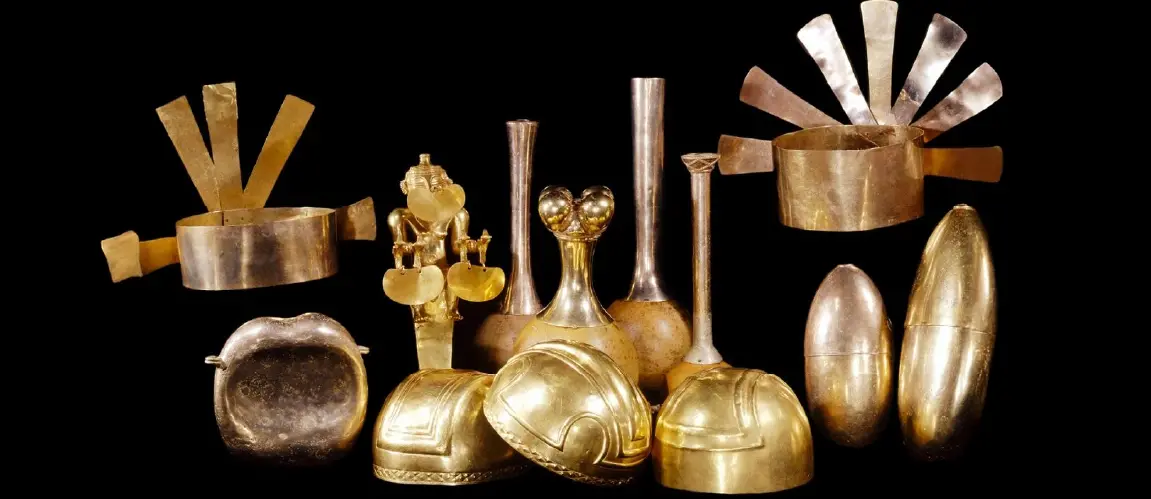
Numerous goldsmithing pieces crafted by pre-Hispanic cultures such as the Muiscas, Quimbayas, Taironas, and Zenúes have been found in different regions of Colombian territory. These communities transformed gold and tumbaga into objects with ritual, political, and symbolic value, including nose rings, pectorals, poporos, masks, pendants, and human or zoomorphic figures. Many of these creations are considered pre-Columbian art pieces today, as they reflect not only complex technical skills but also indigenous ways of thinking and cosmologies. Most of these objects have been preserved thanks to the work of institutions like the Gold Museum of the Banco de la República, where it is possible to explore this archaeological heritage from an archaeological and cultural perspective.
You might be interested in: Colombian textiles: art and tradition in every region of the country
Colombian goldsmithing techniques
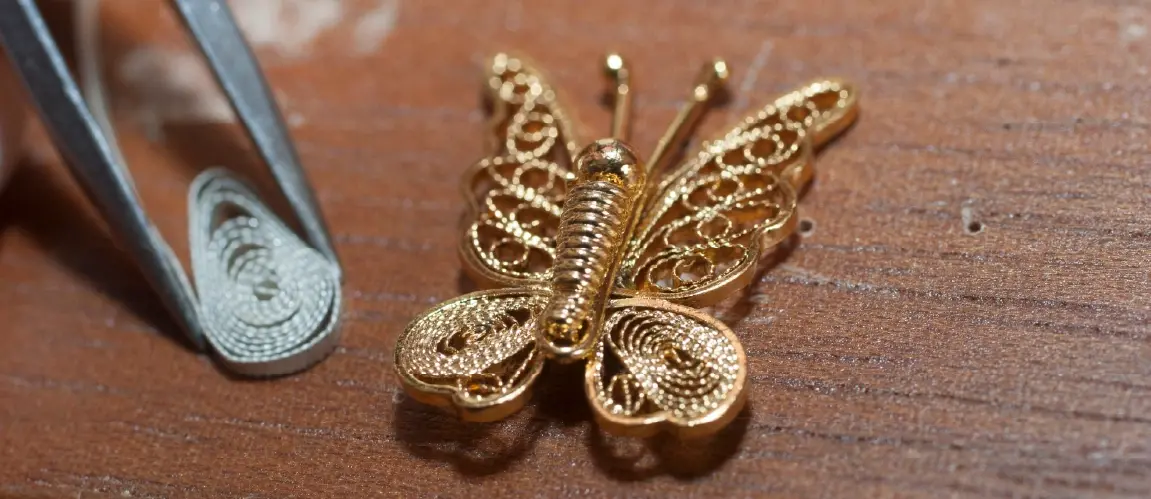
Lost-wax casting
This pre-Columbian technique, widely used by cultures like the Quimbayas and Taironas, involves modeling a figure in beeswax, covering it with clay, and then heating it to melt and remove the wax, leaving a hollow mold. Molten metal is poured through this channel, taking the shape of the original figure. Once cooled, the mold is broken, and the piece is polished. This technique enabled the creation of many of the most complex pre-Columbian art pieces preserved today.
Hammering and repoussé
Hammering was another common practice among indigenous peoples, especially the Muiscas. It involves striking metal sheets with stone or metal tools to shape them. Repoussé, on the other hand, allows for the creation of decorative reliefs from the back of the sheet. These techniques were used to craft flat objects like nose rings, masks, or pectorals, and are still employed by contemporary goldsmiths in artisanal metallurgy.
Filigree
Filigree is a technique introduced to America during the colonial period but reached a high level of development in Colombia, especially in Mompox, Bolívar. It involves weaving fine threads of gold or silver to form ornamental designs, usually on a metal base. The Mompox filigree is recognized for its delicacy, symmetry, and continuity, becoming one of the most renowned expressions of the country's traditional goldsmithing.
Tumbaga and alloys
In the pre-Hispanic period, goldsmiths did not use pure gold but an alloy called tumbaga, which mixes gold and copper (and in some cases silver). This combination not only made the material go further but also facilitated molding and added shine, as it could be polished to highlight the golden hue. This practice demonstrates advanced technical mastery and a deep understanding of materials, key to the development of indigenous goldsmithing.
You might be interested in: Wayúu bags: textiles, types, and a symbol of Colombia's ancestral culture
Where in the country of beauty can you appreciate Colombian goldsmithing?
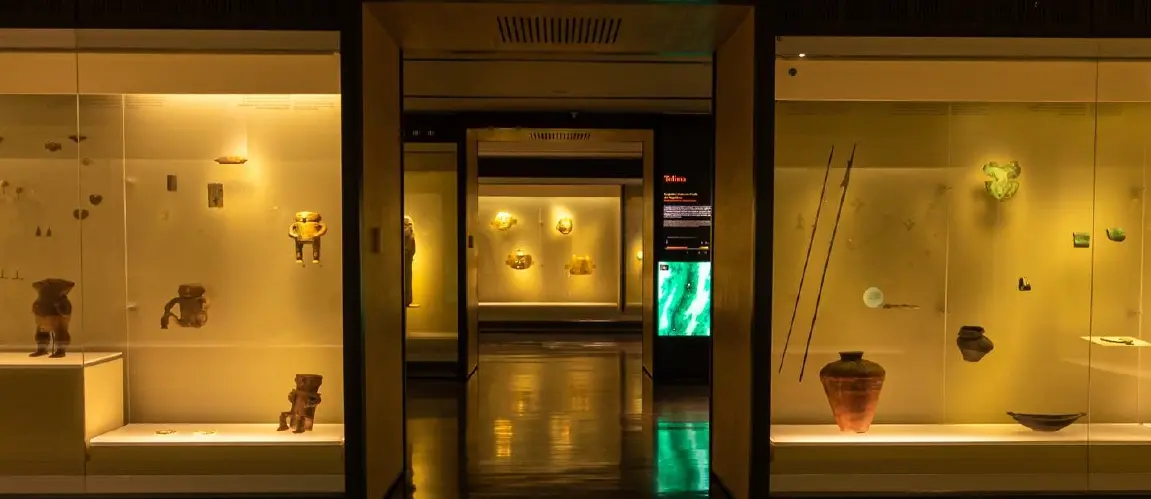
Colombian goldsmithing can be appreciated in museums, artisanal workshops, and towns with goldsmithing traditions that preserve the cultural legacy of past generations. One of the most representative spaces is the Gold Museum of the Banco de la República, located in Bogotá, which houses over 34,000 pre-Hispanic pieces in gold, tumbaga, and other metals. This museum also has regional branches in Santa Marta, Cartagena, Cali, Pasto, and Leticia, where pieces associated with local cultures are exhibited.
Additionally, the Casa de la Cultura in Mompox, in Bolívar, allows you to experience the filigree tradition up close, one of the most recognized living expressions of artisanal goldsmithing in Colombia. In this municipality, declared a UNESCO World Heritage Site, you can visit workshops where artisans continue working with gold and silver using techniques inherited from the colonial period. Other relevant spaces include the Plaza del Artesano in Bogotá and fairs like Expoartesanías (held annually in Bogotá), where artisans from various regions exhibit and sell their creations in filigree, traditional jewelry, and metallurgy. Beyond seeing the pieces, you can understand the processes, materials, and cultural meanings behind each creation.
 Welcome, you are in
Welcome, you are in 








